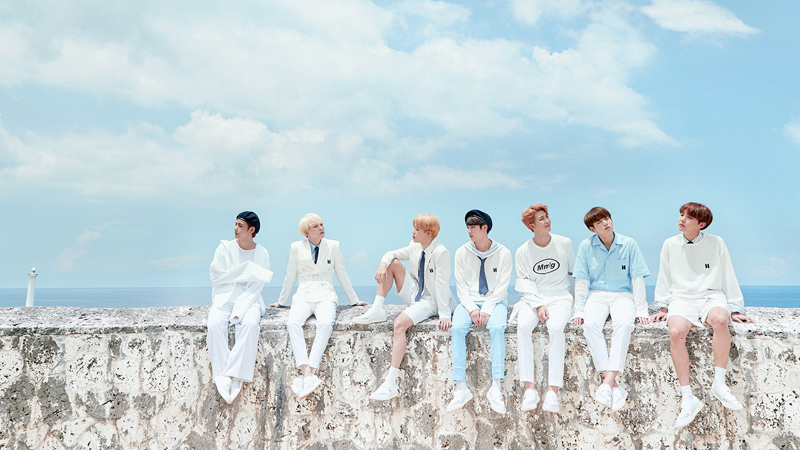
“In the 21st century, culture is power,” – Park Geun-hye.
USD 319.9 million was the government’s budget for the Korean wave (Hallyu) in 2014, and USD 11.6 billion the boost to the Korean economy – yes, this wave is as strong as a tide. First appearing during mid-1990s, Hallyu, denoting the popularity of Korean entertainment has elevated into a tsunami. Whilst film, food, culture, literature, and language are integral to this seismic storm, Korean pop music lies at the heart of it. Decoding the spell that is K-pop, we delve deep into this colourful realm of music, dance, and idols.
Distinct tunes, slick choreography, dazzling stage presence, and enchanting audiovisual elements – Korean pop has reshaped the perception of music. Seamlessly metamorphosing into a cultural phenomenon, this rather new genre is akin to a movement; a movement with a cult following. Traced back to Seo Taiji and Boys, modern K-pop has grown by leaps and bounds since their song I Know pioneered the fusion of hip-hop and South Korean culture. Though the group disbanded in 1996, the trio paved the path for innovators and studios to challenge the norms of music. Furthering the trend, the five-member band, High-five Of Teenagers (H.O.T) evolved into the first idol group. Debuting in 1996, they went on to perform with the King of Pop, Michael Jackson. While studios SM Entertainment, JYP Entertainment, and YG Entertainment (created by one of the members of Seo Taiji and Boys, Yang Hyun-suk) further cultivated the movement by nurturing artists for being frontrunners of the K-wave.
Slow yet steady, the industry witnessed a rising allure in the 21st century, transforming from a niche into an ecosystem. As Kwon Bo-Ah, know as BoA, channelled multicultural positivity, the circle of admiration for K-pop expanded to Japan. Selling more than a million copies of three separate albums in the country, this multilingual singer was crowned the Queen of Korean Pop. Marking the second generation of idol groups along with BoA, TVXQ, initially a five member group and now a duo, championed the Golden Disk Award for Album Of The Year in 2006 and 2008. Under the helm of the largest K-pop company, SM Entertainment, they achieved commercial and critical success. While YG Entertainment had its own gem – Big Bang. Garnering the title of “The Biggest Boyband In The World” in 2015 by the Hollywood Reporter, the quintet has sold over 150 million records till date, and counting. However, it was Wonder Girls who made a significant mark in the West. This all-girl groups’ first EP Nobody hit The Billboard Hot 100 chart in 2009 and idol culture spread to USA. Triumphing visual aesthetics with charisma in tow, K-pop soon went viral.
Part-comedy, part-satire, Gangnam Style by rapper Psy (Park Jae-sang) took the world by storm in 2012. Reigning on YouTube as the most watched video (till 2017), the ubiquitous song had everyone channeling their inner animal enthusiast with its signature move (you know you can’t deny it). Topping the charts across 30 countries, the song shined the spotlight on the lifestyle associated with the Gangnam District of Seoul. While receiving mixed views by critics, Gangnam Style put K-Pop on the world map. Consequently the interpretation of K-pop expanded to include sub-genres from dance-pop and pop-ballads to techno and rock.
Currently dominating the K-pop landscape is the seven member band Bangtan Boys (BTS). Debuting in 2013 with No More Dream, the Big Hit Entertainment managed group has gone to achieve critical acclaim. Rocketing to number 26 on The Billboard 200, the second album by the septet, Wings, set a new record for K-pop. Boasting an unmatched level of social media engagement (Guinness World Records didn’t recognise their Twitter account for nothing), there was more to come for BTS. Breaking yet another record and achieving yet another first for the K-pop industry, their hit Mic Drop catapulted to number 28 on the Billboard Hot 100. Igniting a following unlike any other (yes, they are the most tweeted about celebrity in 2017), members V, Suga, Jin, Jungkook, RM, Jimin, and J-Hope have set a new bar for idols that is closely matched by groups EXO, Girls’ Generation, and 2NE1. But behind the glamour lies immense dedication and years of training.
While fun, catchy, and contagious define the algorithm, and high-quality performance and polished aesthetics the execution criterion, K-pop culture is closely monitored and controlled. A multi-million dollar industry, South Korea’s contemporary music circuit is subject to a gruelling regime. The process begins with highly competitive auditions at a young age with special schools and lessons preparing the awardees for the pop star life, transforming them into idols. With each movement, expression, and behaviour taught and managed, this industry while appearing exuberant from outside can often be notorious. The exceptionally long duration contracts being proof of it. Yet, enriching the music circuit remains the chief goal for idols. “There are still so many amazing things to accomplish,” Rap Monster (BTS) shared with Elle.
Featured Image Courtesy: BTS

